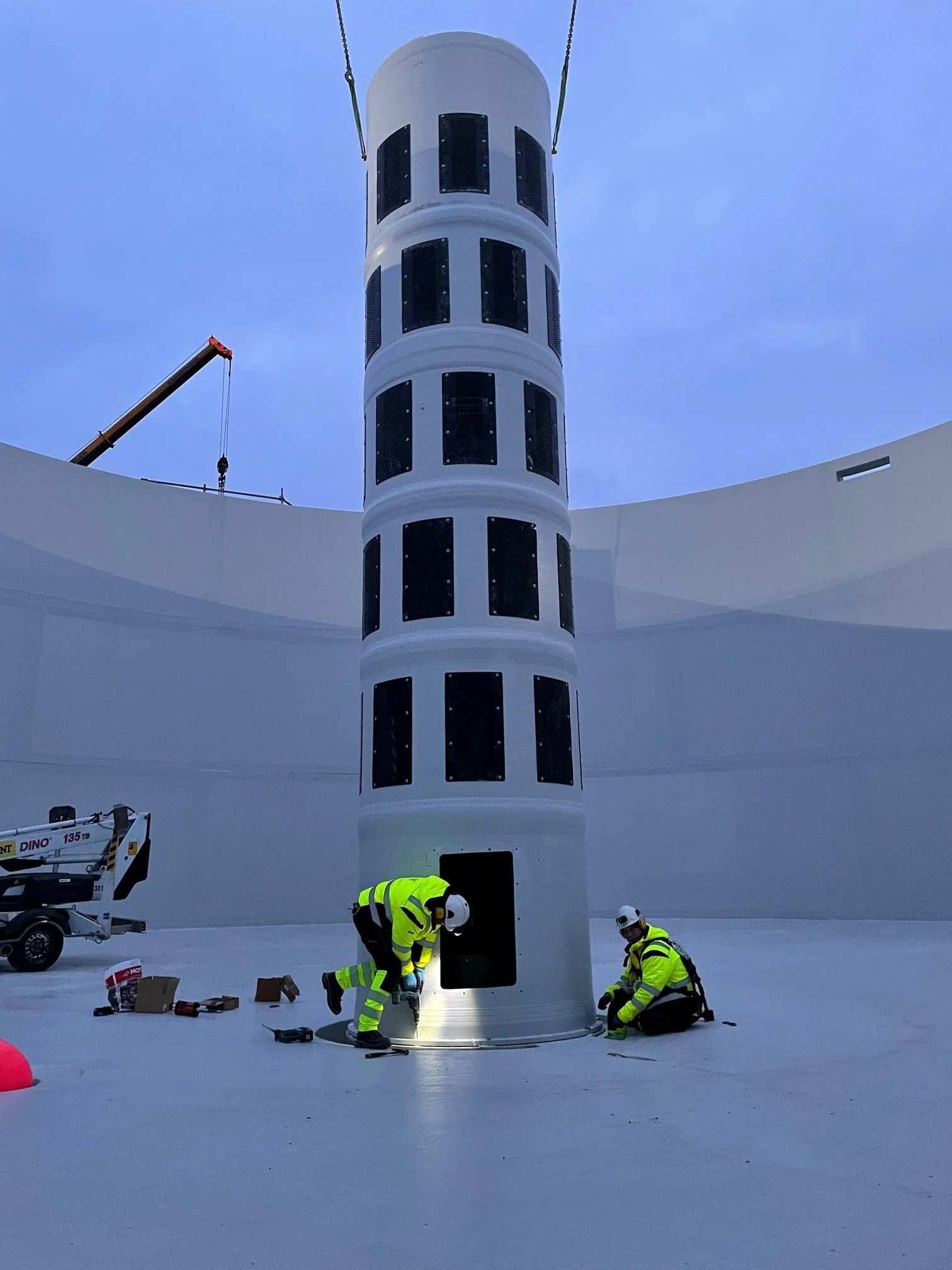At the far end of the coast on one of Norway’s westernmost points lies Bulandet, a group of islands, islets and reefs. By the sea Bulandet Miljøfisk’s new pilot fish farming facility is being built on land. Glassfiber Produkter is proud to have supplied walkways, stairs and large strainers to the project.
The sea provides an extreme environment with strong gusts of wind, large amounts of rain and a lot of salt. It requires solutions which will withstand such conditions.
“A robust material such as fiberglass is very viable without corroding, even in the most corrosive environments. The flexibility and strength ensure that we can design and produce solid solutions which can handle what nature throws at it,” says general manager Elling Stangeland.

Strainers in fiberglass
A pipe over 9 meters in height is placed in the center of each vessel. The tube consists of an outer and a smaller inner tube, where the outer tube is produced with pockets. In these pockets, fiberglass strainers are mounted. The pipes will function as a large strainer and are an important part of the flow technology at the plant. The specially developed technology will ensure healthy fish with strong heart muscles and good condition.
The walkways are mounted above the tubs, and form a path between the pipes. High demands are placed on both design and quality. The walkways’ tailor-made design is adapted to the demanding conditions along the coast, and will withstand powerful gusts of up to 60 m/s.
“It is exciting to see that more and more people are choosing fiberglass,” says Stangeland. “The material’s advantages are perfectly suited to industries such as fish farming, and it gives us the opportunity to show everything the material can be used for.


The fiberglass material is light and easy to handle. The walkways were transported flat-packed and assembled on site.
The best of sea and land
The project is based on the norwegian nature and how to best use it in a sustainable way. Bulandet Miljøfisk is building the facility according to the “Bulandet model”. It aims to take advantage of the benefits of farming in seawater without any of the disadvantages.
The fishing vessels are located below sea level which ensures a lower lifting height. The tanks go 8 meters down and 5 meters below sea level. Energy efficient pumps will lift seawater from a depth of 20-25 meters. It reduces the risk of both lice and other diseases. The water is pumped over to the height pool, before the water is distributed to the fish farms through natural fall. The plant will produce approximately 1,000 tonnes per year, and the first planned delivery is in the spring of 2022.
An important goal for Bulandet Miljøfisk is to give the salmon a natural environment to grow in, and at the same time have the opportunity to control factors which affect health and well-being.
We thank Bulandet Miljøfisk AS for a fantastic opportunity and for the good cooperation. We look forward to following the pilot project going forward.

The walkways are partially assembled and then flat-packed in our workshop. It provides easier transportation and lower costs. The rest of the assembly work is installed on site.
IN CORROSIVE NVIRONMENTS GLASSFIBEREN LASTS
Get in touch and we will help you find the optimal solutionse.

